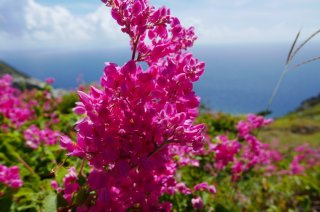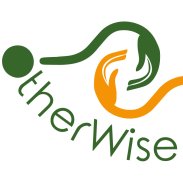
News
Internship opportunity: Controlling Coralita
Invasive alien plants pose a significant threat to Caribbean islands, which can be clearly seen with Coralita (Antigonon Leptopus) on Saba. In a couple of decades it has spread across significant parts of the 13 km2 island, posing a serious threat to unique nature, such as the cloud forest on top of Mt. Scenery. The roots that grow 2 meters deep are very tough to remove, and the tubers ensure it quickly recuperates from mowing and pesticides. As a result, herbicides are often used in excessive amounts, quite often enhancing the problem since Coralita will be the first to return on any cleared land.
There is a dire need for testing different controlling measures on the island, looking both at the effectiveness of measures and the resources required. In this project the student will conduct a couple of controlling experiments and monitor the regrowth. This would be in close cooperation with both SCF and the Agriculture station (a government department) to ensure uptake by Saban society.
Organisation
The SCF, a private non-profit foundation, dates back to 1987 when the first protected area, the Saba Marine Park, was established. Over time, the organization has expanded the scope of its responsibilities and has grown as an organization. The SCF has a ten-member board, consisting of members of the local community, and seven full time employees, plus a regular influx of interns. It is structured to manage a number of functions, including the Saba National Marine Park, the Saba Trail network, the Saba Trail and Information Centre. In developing policy and legislation for nature conservation and management, the SCF fulfils an important role as advisory body for the Island Government and works closely together with the Agriculture Station and Public Works deparments.
Expected results
The student is expected to write a scientific report on how the experiments were conducted, what the outcomes were and an estimation of the costs of doing this on multiple spots on Saba. Next to that, outreach to the general public is very important for this project, since we want to raise awareness amongst Sabans concerning the difficulty of controlling Coralita, but also the best way to go about it. Appropriate outreach activities will be decided on with the intern, for example school visits, a policy brief for the government, and a public lecture.
Saba should draft an invasive management programme, and it is our hope this study will help in pushing that forward. Utrecht University has two PhD candidates working on decision making regarding invasive species, and they will be working closely with the student to ensure the outcomes are translated into practical recommendations. The long term aim is to have SCF and the Island Government decide on an invasive species management plan. On the short term, the study will serve to inform the Agriculture station and Public works department from the Island Government about best control measures
Supervision and facilities provided
The SCF regularly hosts interns and can offer work space, as well as connecting you to relevant people and assisting in arranging materials for the experiments. They offer housing free from cost, but travel to Saba and costs of living on the island have to be covered by the intern.
In order to see the results of such experiments, a minimal duration of 5 months is required for this project, and could be as long as a year. It would require full time investment, though when the pilot is running less fieldwork would be necessary and time could be used for writing reports etcetera.
Required skills
The student should be able to set up and monitor the kind of control measures mentioned in the Ernst and Ketner report, and work independently. Also, the student needs to be enthusiastic about involving other actors with the project and conducting outreach activities. An ecology/botanical background is important, and familiarity with invasion topics would help.
Relevant literature
The Ernst and Ketner study can serve as inspiration for the pilots to be set up on Saba, but additional control measure should be considered as well.
Debrot, A. O. and Bugter, R. 2010. Climate change effects on the biodiversity of the BES islands. Assessment of the possible consequences for the marine and terrestrial ecosystems of the Dutch Antilles and the options for adaptation measures. Alterra-report 2081; IMARES-report C118/10.
Debrot, A. O., De Graaf, M., Henkens, R., Meesters, H. W. G., and Slijkerman, D. M. E. 2011. A status report of nature policy development and implementation in the Dutch Caribbean over the last 10 years and recommendations towards the Nature Policy Plan 2012-2017 IMARES C065/11.
Ernst and Ketner (2007) Corallita Pilot Project St.Eustatius, Netherlands Antilles. Study on the ecology and possible control methods of the invasive plant species Antigonon leptopus (Corallita or Mexican Creeper)
Smith, S. R., van der Burg, W. J., Debrot, A. O., van Buurt, G., and de Freitas, J. A. 2014. Key elements towards a Joint Invasive Alien Species Strategy for the Dutch Caribbean. IMARES C020/14 – PRI Report number 550.
Baillie, J. E. M., C. Hilton-Taylor, and S. N. Stuart. 2004. 2004 IUCN red list of threatened species. A global species assessment. Switzerland and Cambridge, UK: IUCN
Ernst and Ketner (2007) Corallita Pilot Project St.Eustatius, Netherlands Antilles. Study on the ecology and possible control methods of the invasive plant species Antigonon leptopus (Corallita or Mexican Creeper)
Shine, C., M. Kettunen, P. Genovesi, F. Essl, S. Gollasch, W. Rabitsch, R. Scalera, U. Starfinger, and P. ten Brink. 2010. Assessment to support continued development of the EU strategy to combat invasive alien species. Final report for the European commission. Institute for European Environmental Policy (IEEP)
